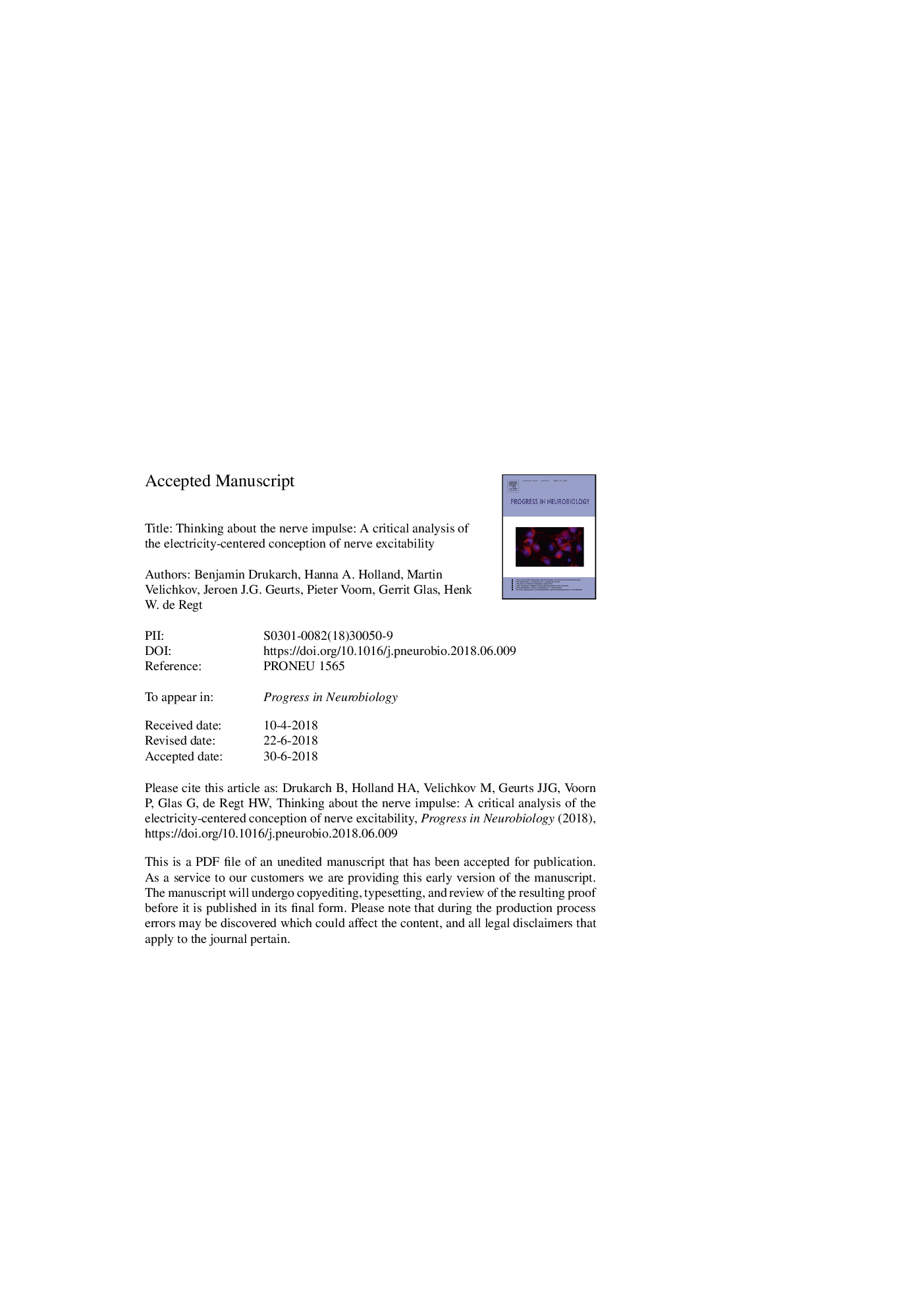| Article ID | Journal | Published Year | Pages | File Type |
|---|---|---|---|---|
| 8959227 | Progress in Neurobiology | 2018 | 57 Pages |
Abstract
Nerve impulse generation and propagation are often thought of as solely electrical events. The prevalence of this view is the result of long and intense study of nerve impulses in electrophysiology culminating in the introduction of the Hodgkin-Huxley model of the action potential in the 1950s. To this day, this model forms the physiological foundation for a broad area of neuroscientific research. However, the Hodgkin-Huxley model cannot account for non-electrical phenomena that accompany nerve impulse propagation, for which there is nevertheless ample evidence. This raises the question whether the Hodgkin-Huxley model is a complete model of the nerve impulse. Several alternative models have been proposed that do take into account non-electrical aspects of the nerve impulse and emphasize their importance in gaining a more complete understanding of the nature of the nerve impulse. In our opinion, these models deserve more attention in neuroscientific research, since, together with the Hodgkin-Huxley model, they will help in addressing and solving a number of questions in basic and applied neuroscience which thus far have remained outside our grasp. Here we provide a historico-scientific overview of the developments that have led to the current conception of the action potential as an electrical phenomenon, discuss some major objections against this conception, and suggest a number of scientific factors which have likely contributed to the enduring success of the Hodgkin-Huxley model and should be taken into consideration whilst contemplating the formulation of a more extensive and complete conception of the nerve impulse.
Related Topics
Life Sciences
Neuroscience
Neuroscience (General)
Authors
Benjamin Drukarch, Hanna A. Holland, Martin Velichkov, Jeroen J.G. Geurts, Pieter Voorn, Gerrit Glas, Henk W. de Regt,
